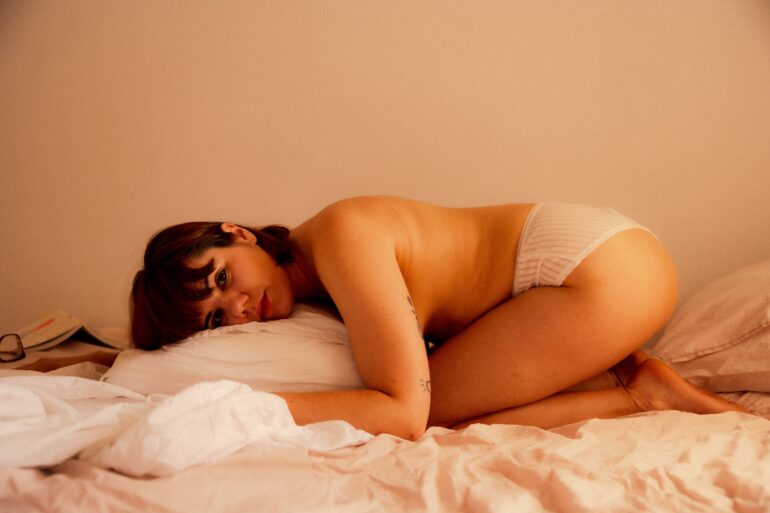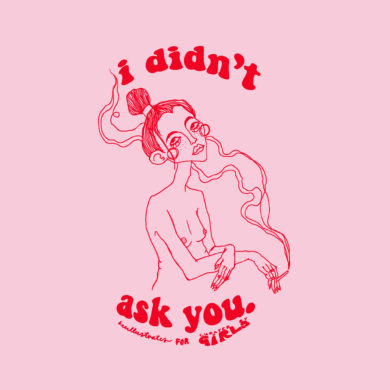Living with type 1 diabetes since the age of seven, art director and graphic designer Charline Barber reclaims the gaze on a body too often misunderstood — medicalized, silenced, or aestheticized by others. In collaboration with photographer Louise Conesa, she turns the lens on herself, revealing the intimate interface between technology and flesh, endurance and beauty, through a deeply personal essay.
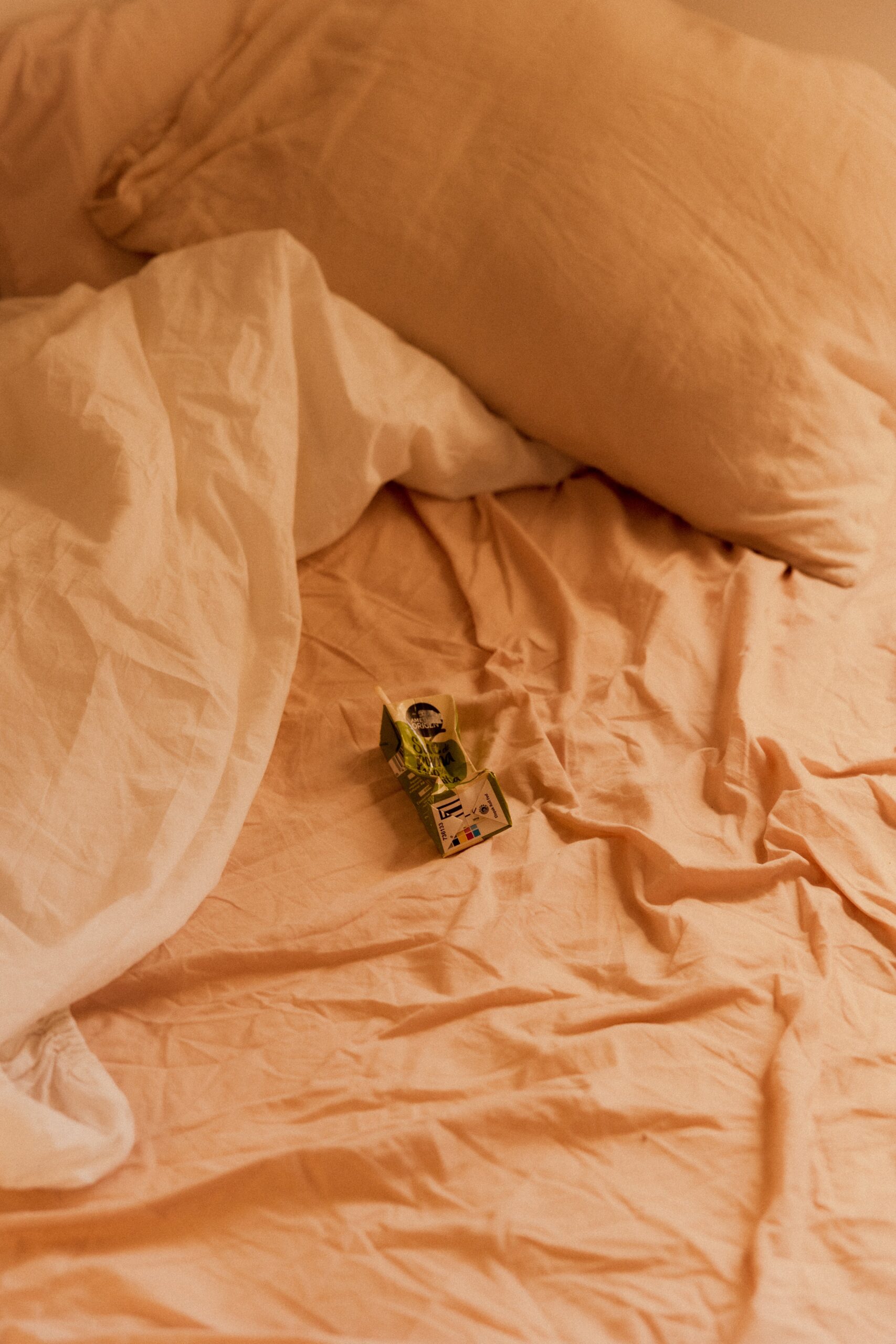
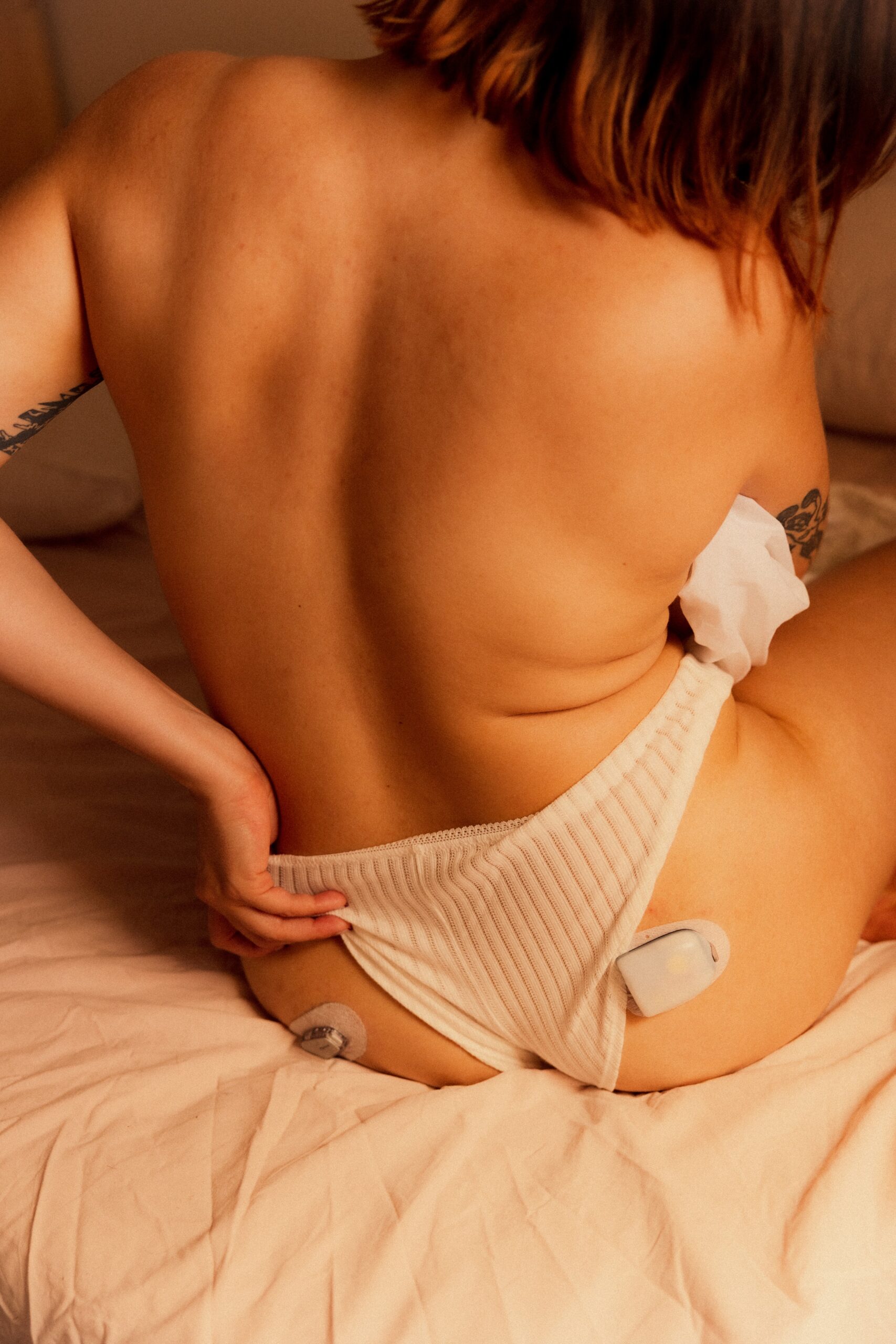
There are bodies you learn to love twice. Mine is one of them.
I met diabetes at 7 years old. An invisible disease, silenced, often associated with an obese person or a grandmother, but rarely with the body of a young girl who looks healthy.
As a child, I imitated my father, also diabetic. As a teenager, I chose denial, convinced that if I acted like everyone else, the disease would disappear.
As a young adult, I rebelled: parties, excess, dangerous games with my own body. Until it said STOP. My body collapsed several times, often at night, sometimes not waking up in the morning.
For a long time, I hated it. It betrayed me, abandoned me, forced me to face my fragility. And yet, it always stood back up. Like a broken vase glued back together, crack after crack. It is no longer intact, but it is still standing.
I want to speak about the bodies of diabetic women, because no one ever does. These bodies that endure, that fight, that suffer in silence, and that must be learned to be loved twice.
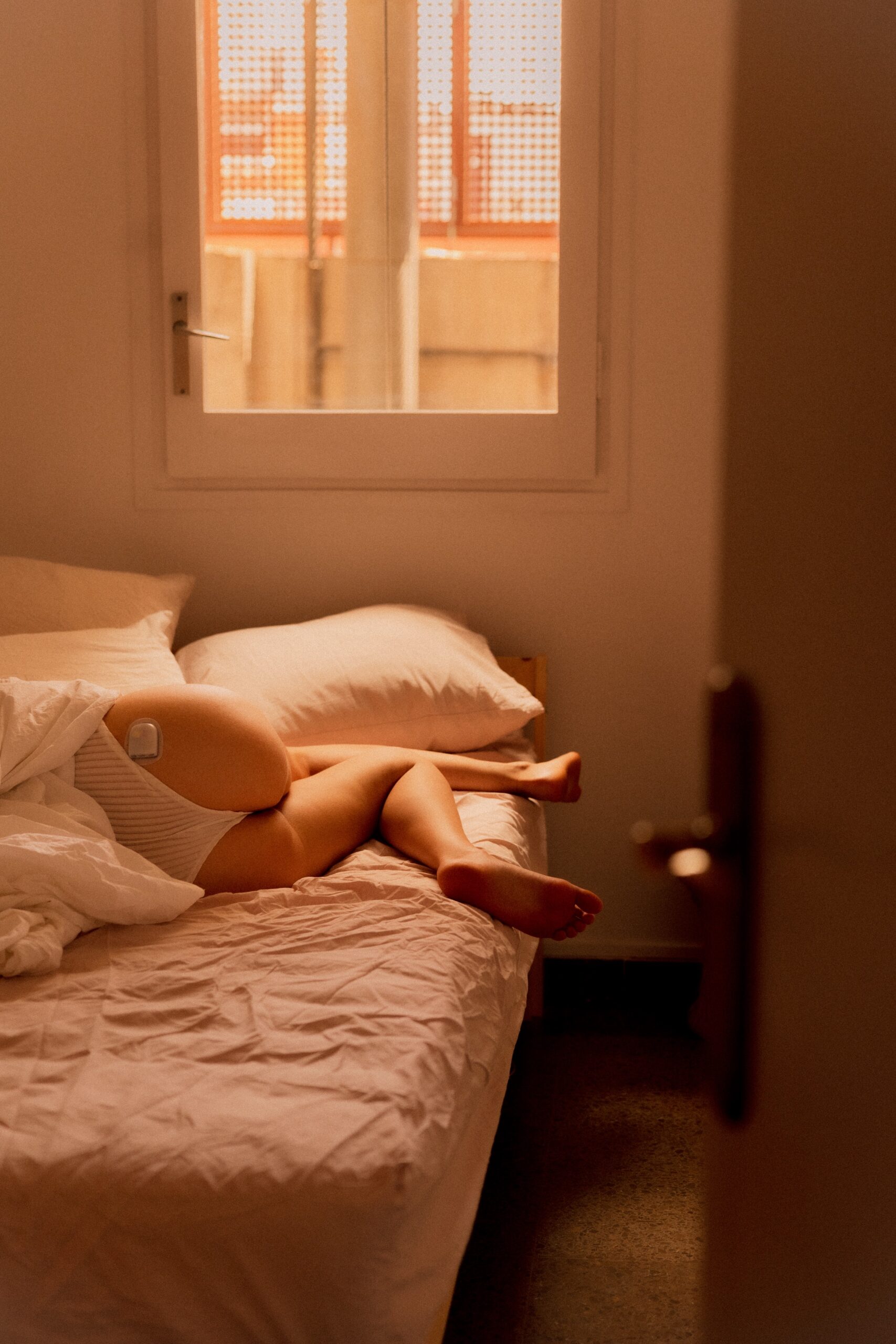
This photographic work was born from a visceral need: to make visible what is usually hidden. To give an aesthetic to what medicine only sees as data. To reveal a female body as it has become: Crossed through, resilient, alive.
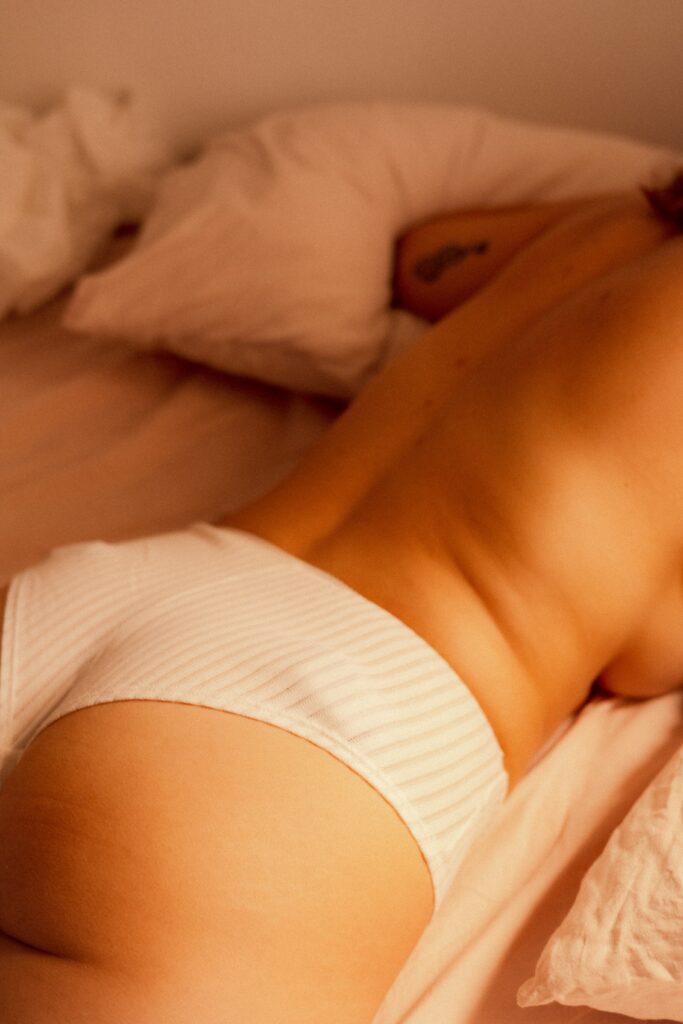
Living with type 1 diabetes means living with a constant presence, discreet but insistent. A machine glued to the skin, a needle under the epidermis, a number displayed on a screen. It means living with a body that is modified, connected, marked by scars and bumps. A body that betrays, that fights, that endures, that adapts.
This photographic work was born from a visceral need: to make visible what is usually hidden. To give an aesthetic to what medicine only sees as data.
To reveal a female body as it has become: Crossed through, resilient, sometimes tired, sometimes powerful. But always alive.
It is not about explaining the disease. It is about showing what it does to one’s relationship with oneself. To sensuality. To nudity.
To the image one gives.
Photographing these details, a catheter trace, a zone of lipodystrophy, a sensor on the upper hip, is a way to restore them a form of dignity. It is to affirm that they are part of the body’s landscape.
It is to refuse shame. It is, in a way, to reclaim oneself.
Through these images lies the hope for a new gaze: softer, more complex, more embodied.
The interface is the link between two zones of contact.
- The body as a passage between technology and flesh.
- Sensors, pumps, medical devices as tools of interface between oneself and an invisible disease.
- The intimate relationship between the self and the outside world, mediated by technical elements, visible or not.
- A marked skin, turned into an interface between inner experience (suffering, control) and outward representation.
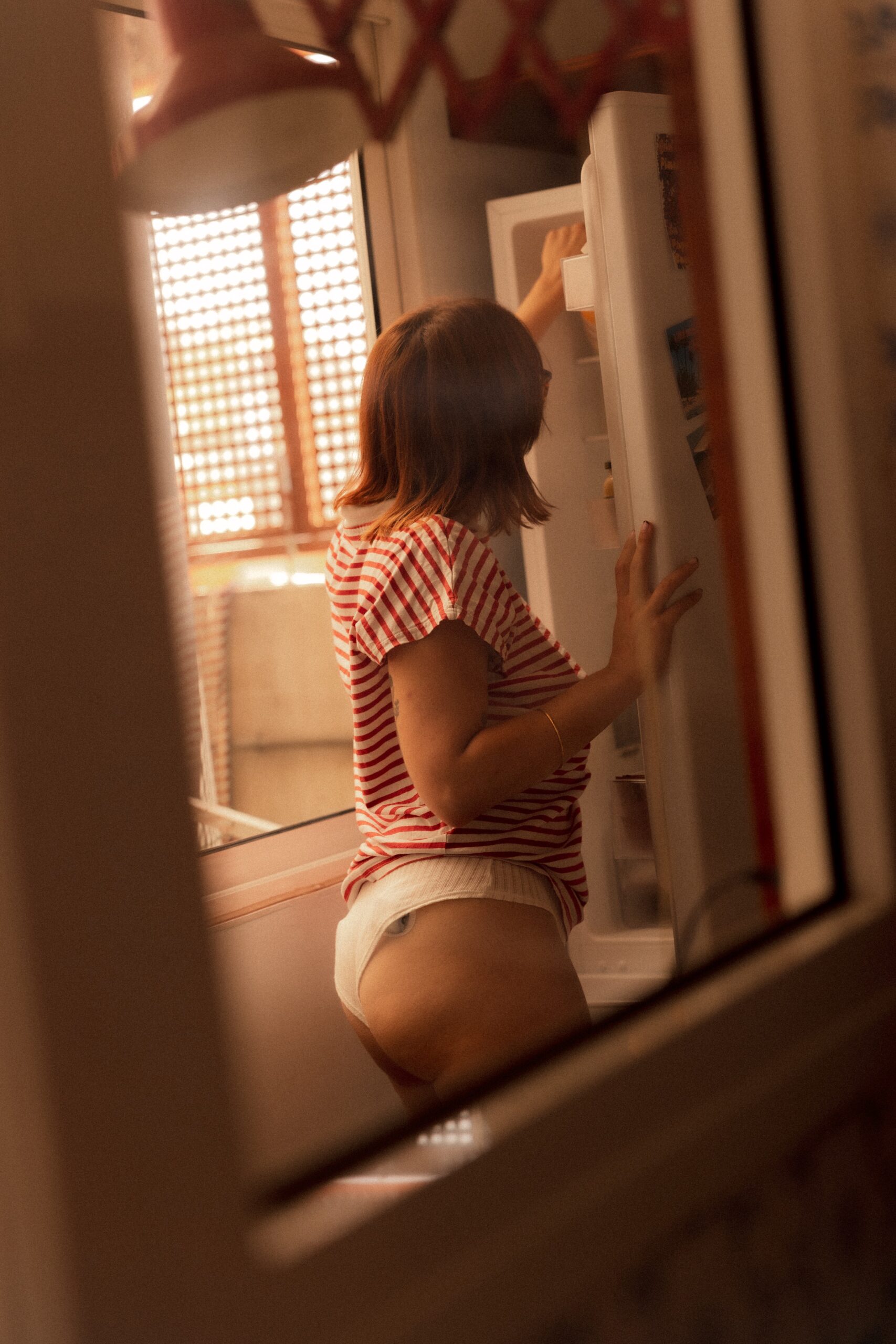
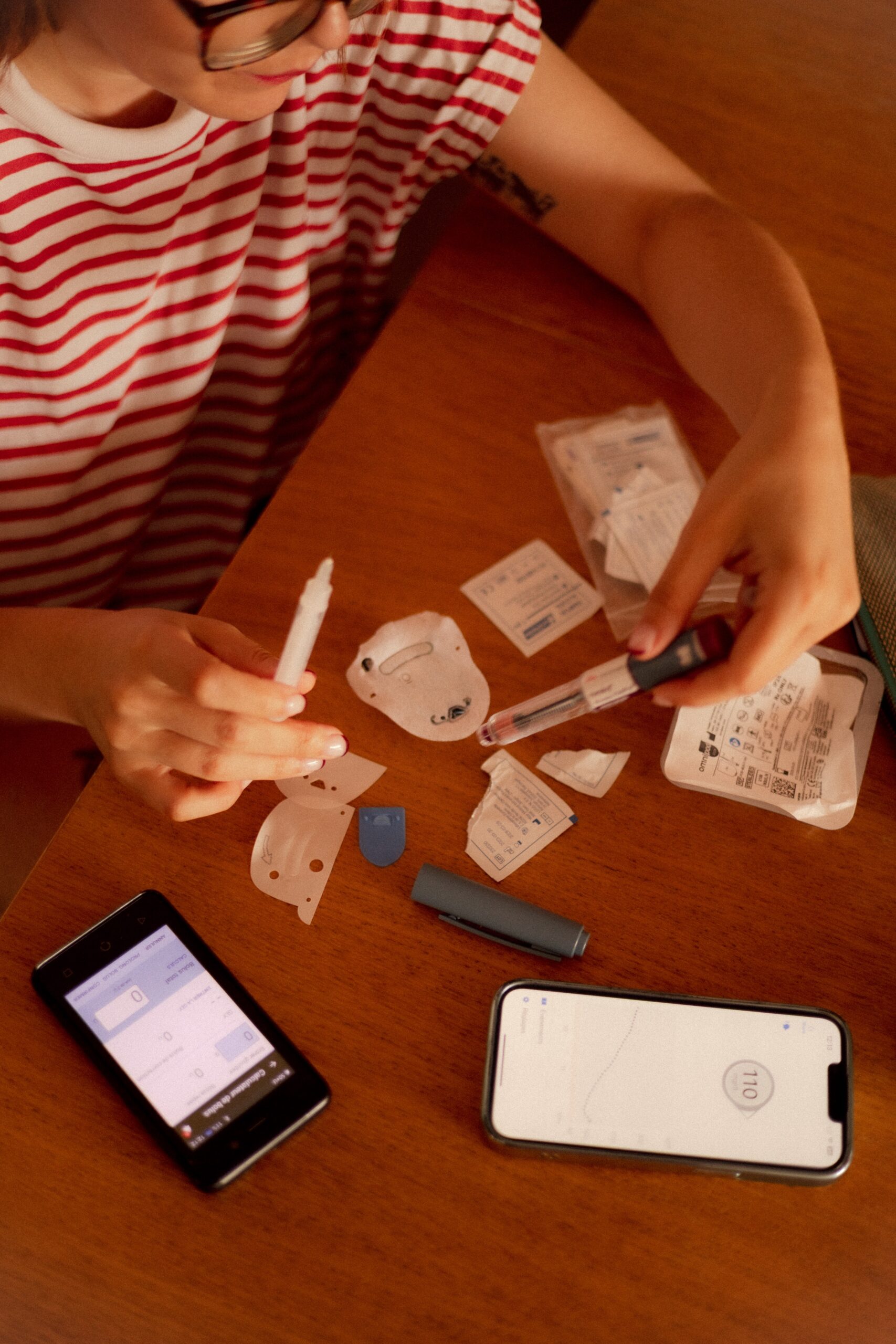
Credits :
Location Barcelona
Art direction @charline.barber.studio
photographer @louiseconesa
Model @charline.barber.studio
Text @charline.barber.studio


